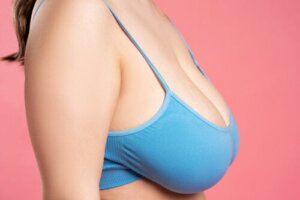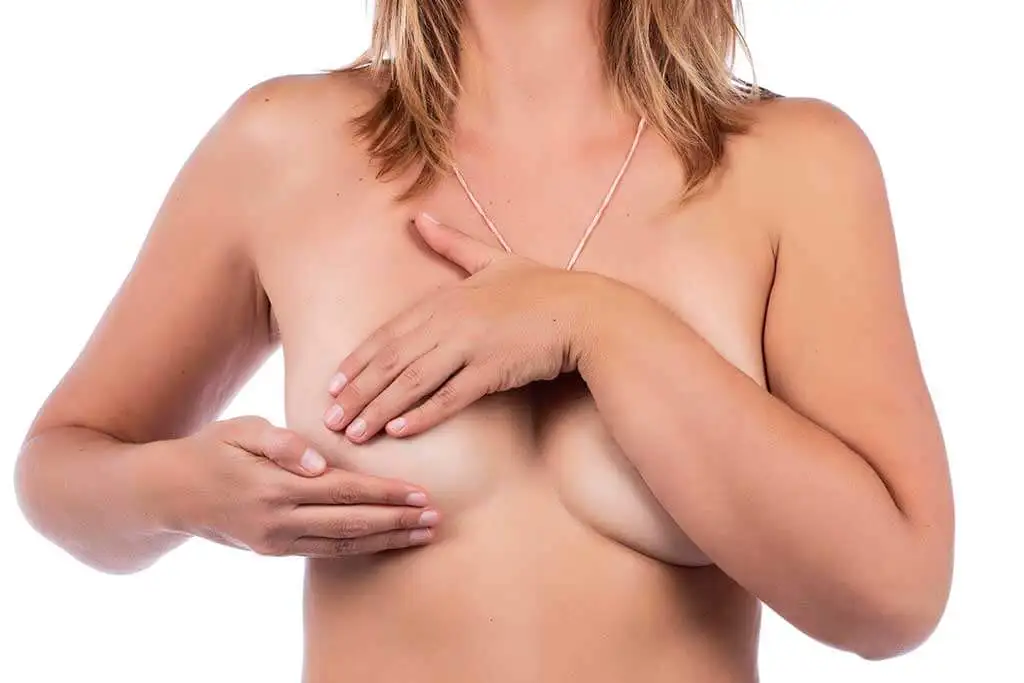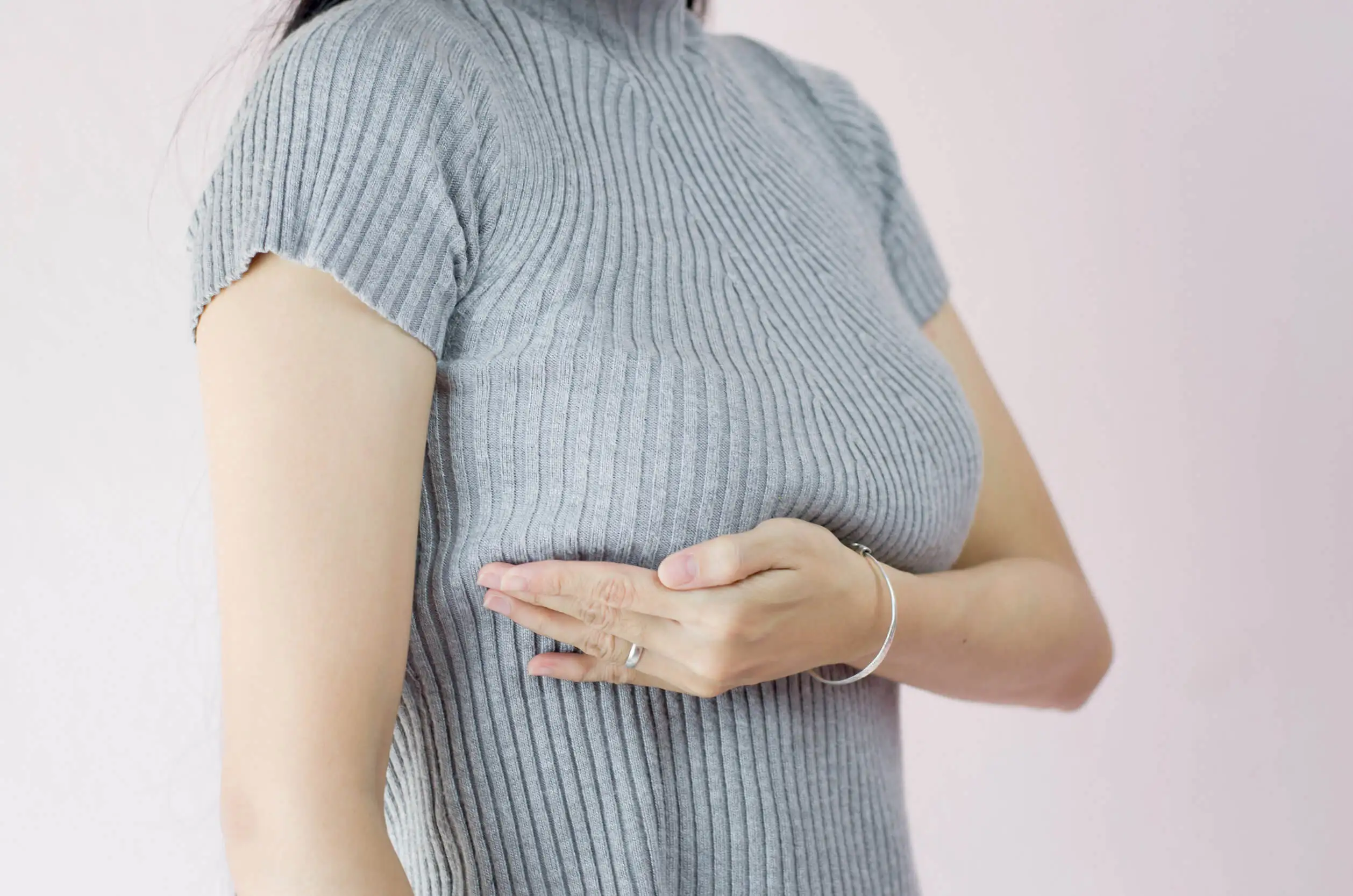Breasts Don't Really Sag from Breastfeeding

There’s already enough evidence that breasts don’t really sag from breastfeeding, despite what many people may think. Until recently, it was believed that breastfeeding had negative consequences on the aesthetics of the breasts. Today, it’s known that this is not the case.
It is true that the breasts are one of the areas of the body that undergo the most changes during pregnancy. It’s also clear that they undergo changes during breastfeeding. However, breasts do not actually sag due to breastfeeding.
Breast sagging can be a consequence of pregnancy. Pregnancy involves multiple changes in a woman’s body, among which there are several transformations in the breasts. However, breastfeeding itself is not responsible for these changes.
Breast changes during pregnancy and breastfeeding

A woman’s breasts begin to form during puberty and continue to change throughout her life. Age is a determining factor in their appearance. In addition to this, there’s always a renewal of breast cells as part of the menstrual cycle.
This renewal is interrupted when a woman becomes pregnant. The breasts then become milk-producing organs. In that process, the number of ducts that carry that milk increases. Also, they become more complex in order to fulfill their function of nourishing the baby.
Also, during gestation, the lactocytes, which are the milk-producing cells, increase, and circulation to this area increases. Everything together makes the breasts become larger – up to a size and a half, in fact.
Then, at the time of giving birth, the breasts already have a different appearance. What follows is that these breasts fill with milk. Usually during the first few months they feel very heavy, but little by little, they begin to lighten.
Breasts don’t actually sag from breastfeeding
Breasts increase due to the effects of pregnancy. Then, they fill with milk and this leads to stretching of the skin, so there’s also an increase in their volume. Such stretching causes the skin to sag, and then it’s not easy for it to regain its tone and elasticity.
However, the available scientific data indicate that breasts do not sag due to breastfeeding. It’s actually the processes associated with pregnancy that lead to substantial changes in the breasts. Added to this, of course, is the passage of time.
In fact, there’s a 2011 study by the American Society of Plastic Surgeons (ASPS) that clearly states that breasts do not sag from breastfeeding. This debunks the widely held myth about breastfeeding.
It also highlights the fact that aesthetics is not a reason to stop breastfeeding. Breastfeeding is very beneficial for the baby and also for the mother. In addition, it doesn’t generate any modification in your breasts.
How to prevent sagging during pregnancy
It has been found the case of women who have had several pregnancies and show no signs of sagging in their breasts. For this reason, many scientists believe that this aspect is influenced by a genetic factor. It’s thought that the changes depend on the quality of the mother’s skin.
Sagging is more common in mothers who are overweight, smoke, or are older. On the other hand, it’s possible to prevent breast sagging with some simple measures to be taken after breastfeeding. Here are some of the ways to do this:
Weight control during pregnancy
Awoman should gain between 25 and 35 pounds during pregnancy. Beyond that volume, you could be overweight and, under these conditions, it would be easier for your breasts to become flabby after breastfeeding.
We think you may also enjoy reading this article: Tips and Guidance for Exercising While Breastfeeding
Gradual weight loss
Losing weight after pregnancy is a process that should be done gradually so as not to increase sagging breasts. If the decrease is sudden, there is a greater chance that the skin will not be able to adapt to the changes and, consequently, your breasts will sag.
Wear a supportive bra
As we have already indicated, breasts do not sag from breastfeeding. However, some mothers believe this to be the case because they begin to notice sagging breasts after breastfeeding. One of the reasons for this to occur is the use of an inadequate bra. The best thing to do is to have your doctor tell you which type of bra to wear.
Do some exercises
Sometimes, just a simple exercise routine is enough to keep the breasts from sagging after breastfeeding. The objective is to strengthen the muscles and ligaments that support the breasts. Weight-bearing exercises and push-ups and planks are very appropriate.
Some other tips

Icing the breasts can also be a good idea. Just put the ice cube on your breasts and massage the area in a circular motion for one minute every day. Natural firming oils are also a good option. The best are rosehip, sweet almond, olive oil, or avocado oil.
Other appropriate measures are as follows:
- Get plenty of sleep.
- Drink plenty of water.
- Eat a healthy diet.
- Quit smoking.
- Protect your breasts from the sun.
Like this article? You may also like to read: 9 Exercises that Will Help Increase the Size of Your Breasts
Physical exercise can prevent sagging breasts
It’s highly advisable for the mother to practice sports such as swimming, which not only keep her fit, but are ideal for recovering the normal tone of the breasts. Yoga and Pilates are also highly recommended.
Breasts don’t really sag from breastfeeding, so there’s no reason to deprive yourself and your baby of the wonderful process of breastfeeding. The healthier the mother’s lifestyle, the less risk she runs of having sagging breasts after breastfeeding.
All cited sources were thoroughly reviewed by our team to ensure their quality, reliability, currency, and validity. The bibliography of this article was considered reliable and of academic or scientific accuracy.
Bonyata, K. ¿Cuándo empezaré a producir leche?
Myth Prevents Successful Breastfeeding In Breast Augmentation Patients. (2011, 20 septiembre). News Powered by Cision. https://news.cision.com/american-society-of-plastic-surgeons/r/myth-prevents-successful-breastfeeding-in-breast-augmentation-patients,c9164073.
Rosada Navarro, Y., Delgado Medina, W., Meireles Ochoa, M. Y., Figueredo González, L. I., & Barrios García, A. (2019). Factores de riesgo que influyen en el abandono de la Lactancia Materna. 2017-2018. Multimed, 23(6), 1278-1293.
This text is provided for informational purposes only and does not replace consultation with a professional. If in doubt, consult your specialist.








